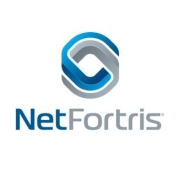Software Defined Networking (SDN) offers a dynamic and efficient alternative to traditional networking by automating network management, enabling flexible resource allocation, and enhancing network programmability.
Software Defined Networking decouples network control and forwarding functions, allowing for improved management and scalability. It transforms networking by providing centralized control, facilitating innovation, and optimizing network resources. This approach to networking supports faster deployment of applications and services, enhances security through more granular traffic management, and reduces operational costs through automation.
What are the critical features of SDN?In telecommunications, SDN drives flexible network architectures, reduces service delivery time, and lowers maintenance requirements. In data centers, it eases management complexity and enhances performance through efficient load balancing and resource optimization.
Organizations find SDN helpful for improving network reliability, adaptability, and efficiency, making it a practical approach for maintaining competitiveness in rapidly changing business landscapes.








![Cumulus Networks [EOL] Logo](https://images.peerspot.com/image/upload/c_scale,dpr_3.0,f_auto,q_100,w_60/rCrJ5QMmvucDdhnMyyNUFbAd.jpeg)




















The main objective of an SDN is to make networks more agile and flexible and to improve network control so that enterprises, as well as service providers, can quickly respond to changing business requirements. Its main goal is to eliminate technology and management silos, allowing organizations to orchestrate services from end to end. With software-defined networking, a lot of step-by-step manual provisioning errors and other issues are reduced, resulting in significantly improved service provisioning compared to old networking approaches.
The three layers of an SDN are made up of:
SDN is important because it provides organizations with increased control, greater speed and flexibility, a customizable network infrastructure, and most importantly, robust security. With an SDN, developers can execute greater control levels over the flow of network traffic by simply programming an open software-based controller. It also lets network administrators have more flexibility when choosing networking equipment, giving them the choice to select a single protocol to use with any number of hardware devices via a central controller.
SDN is also important because it helps organizations prioritize applications that require more availability and also optimize the flow of data throughout a network. Moreover, an SDN provides complete visibility into an entire network, thus giving companies a holistic overview of security threats.
SDN is worthwhile for organizations for the many advantages it has to offer that traditional networking can’t provide.
Software Defined Networking (SDN) enhances network management by separating the control plane from the data plane, allowing centralized control. This approach improves network agility and flexibility by enabling dynamic management of network resources. SDN supports scalability through efficient load balancing and traffic prioritization, optimizing network performance. It enhances security by enabling rapid detection and mitigation of threats and faults. SDN reduces operational costs through automation, minimizing manual configuration and human errors. The architecture is compatible with existing hardware, ensuring easy integration. SDN facilitates rapid innovation and deployment of new applications and services, aligning with evolving business needs.
SDN enhances network scalability by decoupling the control plane from the data plane, allowing you to manage the entire network from a centralized controller. This centralization enables easier deployment of new devices and services, streamlining the scaling process. You can also implement consistent policies across the network, ensuring that scaling operations follow the same rules and standards. The flexibility of SDN makes it feasible to adjust network capacity without significant hardware investments.
Can SDN optimize network security?Yes, SDN can significantly optimize network security. By centralizing control, SDN enables automated, dynamic response to threats. You can quickly implement security policies across the network and update them as needed. SDN allows for real-time monitoring and provides a holistic view of the network, making it easier to spot unusual activity and potential vulnerabilities. With programmable networking, threat containment and mitigation actions can be executed more effectively, minimizing the risk of breaches.
What role does SDN play in data center management?SDN plays a crucial role in modernizing data center management. It facilitates the automation of network configurations and enhances the agility of data center operations. You can reduce manual configuration errors, optimize resource allocation, and improve overall efficiency. The programmability of SDN allows for customized policy implementation, tailored to the specific needs of your data center. This level of control helps manage large-scale, complex environments with greater precision.
How does SDN support multi-cloud connectivity?SDN supports multi-cloud connectivity by providing a unified network management framework across different cloud environments. It simplifies the integration of various cloud services by enabling consistent network policies and settings. You can seamlessly connect private, public, and hybrid clouds, ensuring efficient data flow and reliable performance. With SDN, maintaining security and compliance across multi-cloud infrastructures becomes manageable, as it facilitates thorough monitoring and rapid adjustments to cloud networking configurations.
What are the cost benefits of implementing SDN?Implementing SDN can yield significant cost benefits by reducing dependency on specialized hardware, decreasing operational costs through automation, and enhancing resource utilization. By centralizing control functions, you can lower the complexity and expense of network management and configuration. SDN enables quick adaptation to network demands without needing costly physical upgrades, ensuring that you maximize the efficiency of existing resources. Additionally, by improving network agility and performance, SDN can support business growth and innovation, offering long-term financial advantages.